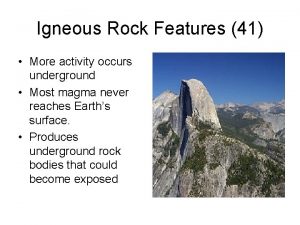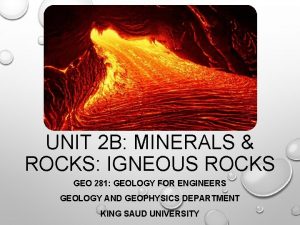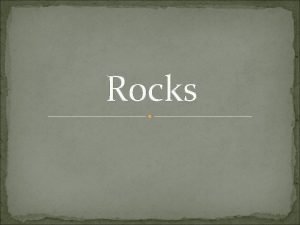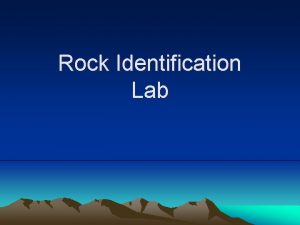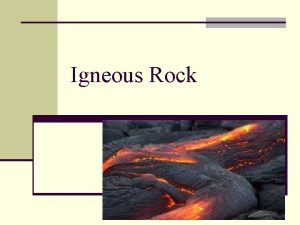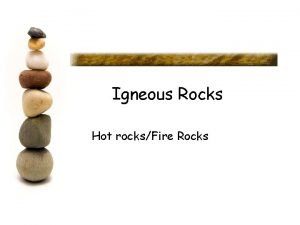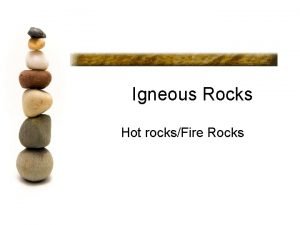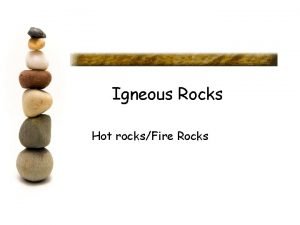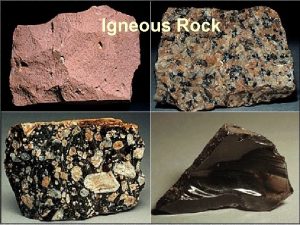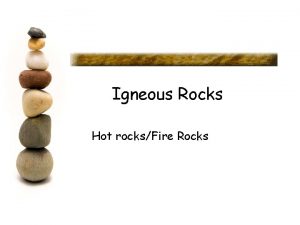Igneous Rock Features 41 More activity occurs underground










- Slides: 10

Igneous Rock Features (41) • More activity occurs underground • Most magma never reaches Earth’s surface. • Produces underground rock bodies that could become exposed

• Rock bodies are called intrusive igneous rock features. • The most common are batholiths, sills, dikes, and volcanic necks.

• Largest intrusive igneous rock bodies are batholiths. • Can be hundreds of kilometers in width and length and several kilometers thick. • Form when magma bodies being forced upward inside Earth cool slowly and solidify before reaching the surface. • http: //www. youtube. com/ watch? v=6 a 2 -u. EZZEG 0

• Some batholiths have been exposed at Earth’s surface by many millions of years of erosion. • The granite domes of Yosemite National Park are the remains of a huge batholith that stretches across much of the length of California.

Dikes and Sills • Magma sometimes squeezes into cracks in rock below the surface. • When this cuts across rock layers and hardens, it is called a dike. • Magma that is forced into a crack parallel to rock layers and hardens is called a sill http: //www. youtube. com/watch? v=6 lo. GYTCBVqo

Volcanic Neck • When a volcano stops erupting, the magma hardens inside the vent. • Erosion wears away the volcano. • Leaving behind the solid igneous core as a volcanic neck

Calderas • Sometimes after an eruption, the top of a volcano can collapse. • This produces a large depression called a caldera

Magma that has hardened in a crack parallel to rock layers is a _____. • A. Batholith • B. dike • C. neck • D. sill

• What is a batholith? • Batholiths, like dikes and sills, are intrusive igneous rock features. They form when magma cools slowly underground without reaching Earth’s surface. Batholiths are the largest of the intrusive igneous rock bodies.

What is the difference between a volcanic crater and a caldera? Both craters and calderas are steep-walled depressions around a volcano’s vent. A caldera is a large depression produced by the collapse of the top of a volcano. http: //video. pbs. org/video/2182459039
 Lirik lagu more more more we praise you
Lirik lagu more more more we praise you More more more i want more more more more we praise you
More more more i want more more more more we praise you Igneous metamorphic sedimentary
Igneous metamorphic sedimentary Underground igneous rock bodies are called
Underground igneous rock bodies are called Igneous metamorphic sedimentary
Igneous metamorphic sedimentary Diagram of rock cycle for class 7
Diagram of rock cycle for class 7 Concept map igneous rock
Concept map igneous rock I
I Topography associated with massive igneous rocks
Topography associated with massive igneous rocks Foliated metamorphic rocks
Foliated metamorphic rocks Igneous rock fun fact
Igneous rock fun fact



